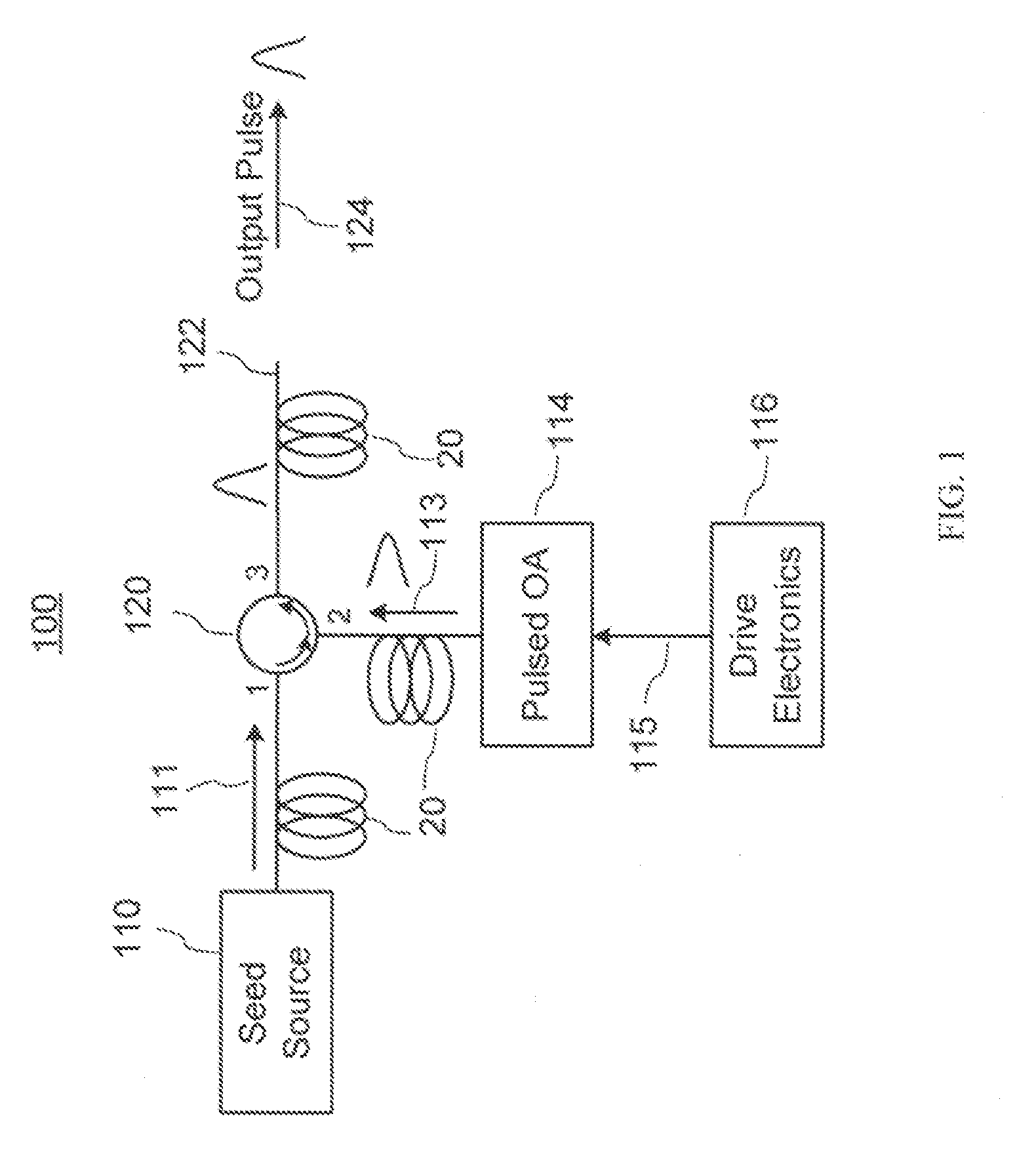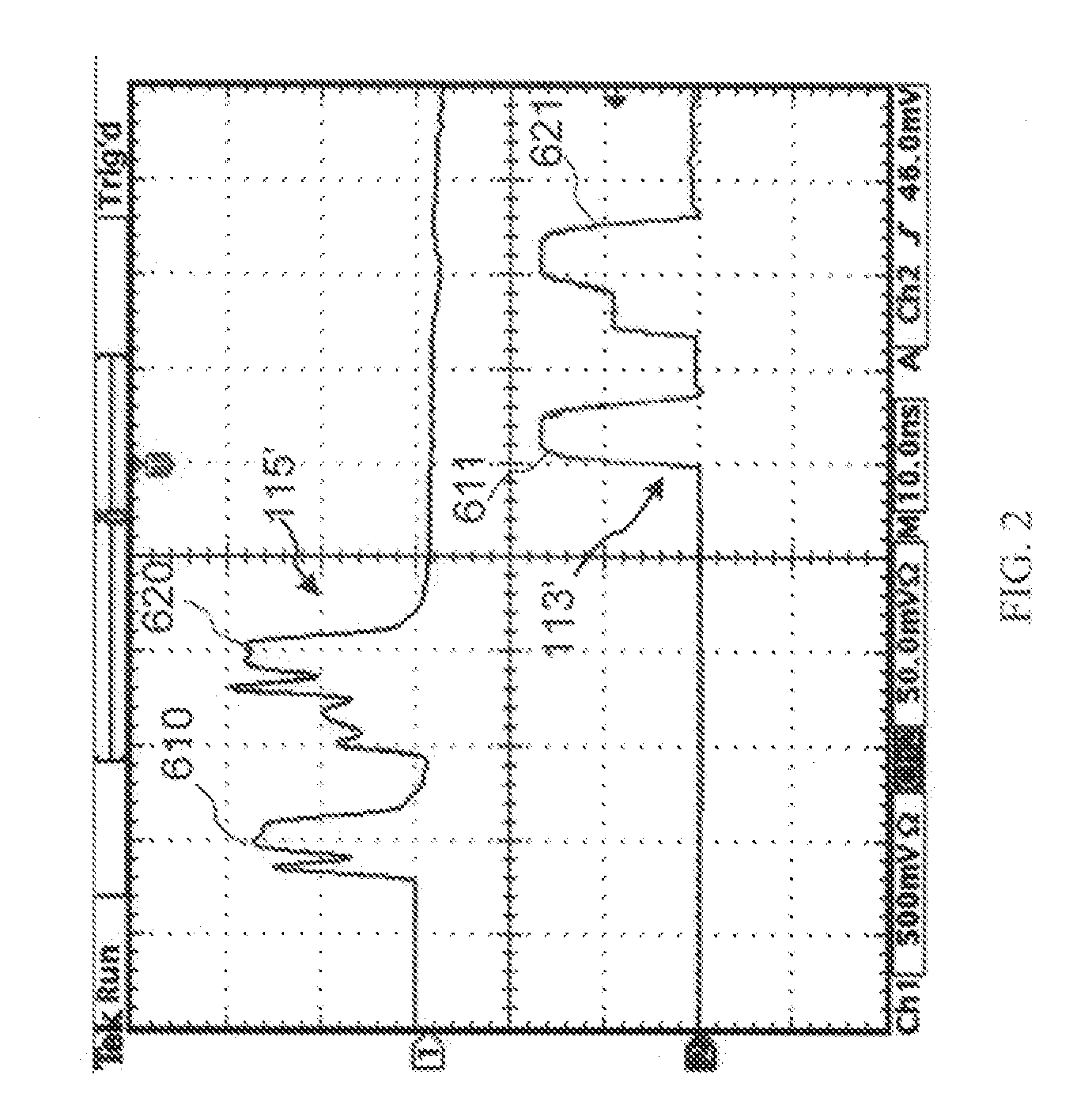Pulsed optical source
a pulsed optical source and source technology, applied in the field of pulsed optical radiation sources, can solve the problems of affecting both the spectrum and the noise level of the seed source, unable to easily vary in the field without compromising laser performance, and unable to achieve the effect of preventing back reflection
- Summary
- Abstract
- Description
- Claims
- Application Information
AI Technical Summary
Benefits of technology
Problems solved by technology
Method used
Image
Examples
Embodiment Construction
[0026]In the following description, the term “light” is used to refer to electromagnetic radiation, including but not limited to visible light. Furthermore, the term “optical” is used to qualify all electromagnetic radiation, including light in the visible spectrum and light in other wavelength ranges. The terms “optical radiation”, “optical signal”, and “light” are used herein interchangeably and encompass visible light and non-visible light such as ultraviolet (UV) light and infrared (IR) light.
[0027]Exemplary embodiments of an optical pulse source (OPS) according to the present invention are shown in FIGS. 1, 5-10, and are hereafter described.
[0028]With reference to FIG. 1, an OPS 100 includes a seed optical source (SOS) 110 for providing seed optical radiation 111, a pulsed optical amplifier (POA) 114 which is optically coupled to the SOS 110 to receive the seed optical radiation 111 for pulsed amplification thereof, and an output optical port 122 which is in turn optically coup...
PUM
 Login to View More
Login to View More Abstract
Description
Claims
Application Information
 Login to View More
Login to View More - R&D
- Intellectual Property
- Life Sciences
- Materials
- Tech Scout
- Unparalleled Data Quality
- Higher Quality Content
- 60% Fewer Hallucinations
Browse by: Latest US Patents, China's latest patents, Technical Efficacy Thesaurus, Application Domain, Technology Topic, Popular Technical Reports.
© 2025 PatSnap. All rights reserved.Legal|Privacy policy|Modern Slavery Act Transparency Statement|Sitemap|About US| Contact US: help@patsnap.com



